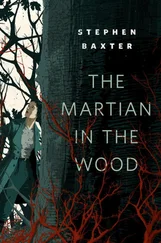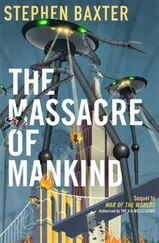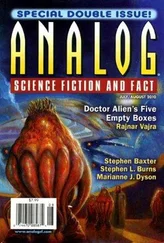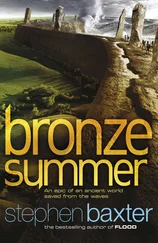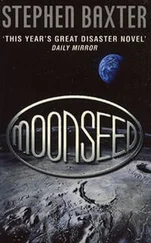Longtusk watched in fascination as the young apprentice wrestled to turn an ancient mammoth tusk — an immense spiral twice his height — into ivory strips and pieces, useful for the artisan to work.
At the tusk’s narrow, sharp end, he simply chopped off pieces with a stone axe. Where the tusk was too wide for that, he chiseled a deep groove all around the tusk until only a fine neck remained, and then split it with a sharp hammer blow.
To obtain long, thin strips of ivory the apprentice had to cut channels in the tusk and then prize out the strips with chisels. Often the strips would splinter and break — an outcome which invariably won the apprentice abuse and mild beatings from his impatient master.
But the apprentice could even bend ivory, making bracelets small enough to fit around the slim wrists of Fireheads. First he soaked a section of the tusk in a pit of foul-smelling urine. Then he wrapped the softened tusk in a fresh animal skin, soaked with water, and placed it in the hot ashes of a hearth. The skin charred and fell away in flakes. But the ivory — on extraction from the hearth with tongs made of giant deer antlers — was flexible enough to bend into loops tied off with thongs.
Flamefingers, meanwhile, made a bewildering variety of artifacts from the ivory pieces.
He made tools, whittling suitable sections into chisels, spatulas, knives, daggers and small spears. He engraved the handles of these devices with crosshatched cuts to ensure a firm grip when the tools were held in the paw, and returned the tools to the apprentice for arduous polishing with strips of leather.
But Flamefingers also made many artifacts with no obvious purpose save decoration: for example thin disks, cross-sections from the fatter end of the tusks, with elaborate carvings, pierced through the center to take a rope of sinew or skin.
But the most remarkable artifacts of all were the figurines, of Fireheads and animals.
Flamefingers started with a raw, crudely broken lump of ivory that had been soaked for days. But despite this softening the ivory was difficult to work — easy to engrave along the grain, but not across it — and the artisan patiently scraped away at the surface with stone chisels, removing finer and finer flakes.
And, slowly, like the sun emerging from a cloud, a form emerged from the raw tusk, small and compact, coated in hairs that were elaborately etched into the grain.
Longtusk could only watch, bewildered. The artisan seemed able to see the object within the tusk before he had made it — as if the figure had always been there, embedded in this chunk of ancient ivory, needing only the artisan’s careful fingers to release it.
The artisan held up the finished piece on his paw, blew away dust and spat on it, polishing it against his clothing.
Then he looked up at Longtusk standing over him, with the usual gaggle of Firehead cubs clutching his belly hairs.
Flamefingers smiled. He held up the figure so Longtusk could see it.
Longtusk, drawn by curiosity, reached out with the pink tip of his trunk and explored the carving. Flamefingers watched him, blue eyes gleaming, fascinated by the reaction of the woolly mammoth to the toy.
It was a mammoth, exquisitely carved.
But, though it was delicate and fine, there was a faint, lingering smell of the long-dead mammoth who had owned this tusk, overlaid by the sharp stink of the spit and sweat of Firehead.
Longtusk, intrigued but subtly repelled, rumbled softly and stepped away.
On the day of Bedrock’s Remembering, Crocus at last emerged from her hut. Her bare skin was pale from her lengthy confinement. But her golden hair blazed in the light of the low sun.
All the Fireheads — even the Shaman — bowed before her. She turned and surveyed them coldly.
Today the Fireheads would do more than Remember Bedrock. Today, Longtusk had learned, the Fireheads would accept their new leader: this slim young female, Crocus, the only cub of Bedrock, and now the Matriarch of the Fireheads.
Crocus stepped forward to Longtusk. She walked confidently, as a new Matriarch should. But Longtusk could see how fragile she was from the tenseness of her lips, the softness of her eyes.
"Baitho," she said softly.
Obediently he dipped his head and lowered his trunk to the ground. She climbed on his back with practiced ease. He straightened up, feeling invigorated by her gentle presence at his neck once more.
He raised his trunk and trumpeted; the noise echoed from the silent steppe.
He turned and, with as much grandeur as he could muster, he began to walk toward the grave. The Fireheads and mastodonts formed up into a loose procession behind him.
And now, at a gesture from the Shaman, the music began.
They had flutes made of bird bones, hollowed out and pierced. They had bull-roarers, ovals of carved ivory which they spun around their heads on long ropes. They had instruments made of mammoth bones: drums of skulls and shoulder blades to strike and scrape, jawbones which rattled loudly, ribs which emitted a range of notes when struck with a length of femur. And they sang, raising their small mouths and ululating like wolves.
In all this noise, Longtusk and his passenger were an island of silence, towering over the rest. Her fingers twined tightly in his fur, as they had when she was a small and nervous cub just learning to ride him, and he knew that this day was extraordinarily difficult for her.
The grave was on the outskirts of the settlement, a simple straight-sided pit dug into the ground by Walks With Thunder.
Crocus slid to the ground and stood at the lip of the grave, paws folded. Longtusk stood silently beside her, the wind whipping the hair on his back.
The body of Bedrock already lay at the bottom of the pit, a small and fragile bundle wrapped in rhino hide. Bedrock’s artifacts were set out around him: spears and knives and chisels and boomerangs, the tools of a home-builder and hunter, many of them made of mammoth ivory. And mammoth vertebrae and foot bones had been set out in a circle around him, as if protecting him.
But now the Shaman was here in his ridiculous smoking hat, his skin painted with gaudy designs. He leapt into the pit and began to caper and shout. He had rattles of bone and wood that he shook over Bedrock’s inert form, and he scattered flower petals and sprinkled water, raising his face and howling like a hyena.
As Crocus watched this performance she started to tremble — not from distress, Longtusk realized, but from anger. It was a rage that matched Longtusk’s own musth-fueled turmoil.
At last, it seemed, she could stand it no more. She tugged Longtusk’s trunk. "A dhur," she said. Pick up that thing.
Longtusk snorted in acquiescence. He knelt down, reached into the pit with his trunk, and plucked the Shaman out of the grave, burning hat and all. He set the Firehead down unharmed by the side of the pit.
Smokehat was furious. He capered and jabbered, slapping with his small paws at Longtusk’s trunk.
Crocus stepped forward, eyes alight, and she screamed at the Shaman.
His defiance seemed to melt before her anger, and he withdrew, eyes glittering.
There was silence now. Crocus stepped up to the grave once more. She sat down, legs dangling over the edge of the pit.
Longtusk reached down to help her. But she pushed his trunk away; this was, it seemed, something she must do herself.
She scrambled to the pit floor. She brushed away the dirt and petals that the Shaman had scattered over her father.
She dug an object out of her clothing and laid it on top of the body. It was the rhino horn, the trophy of the last hunt — still stained with the creature’s blood, as raw and unworked as when it had been smashed from the rhino’s skull. Then she stroked the hide covering her father, and she picked up earth and sprinkled it over the body.
Читать дальше

